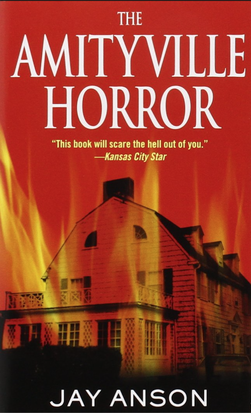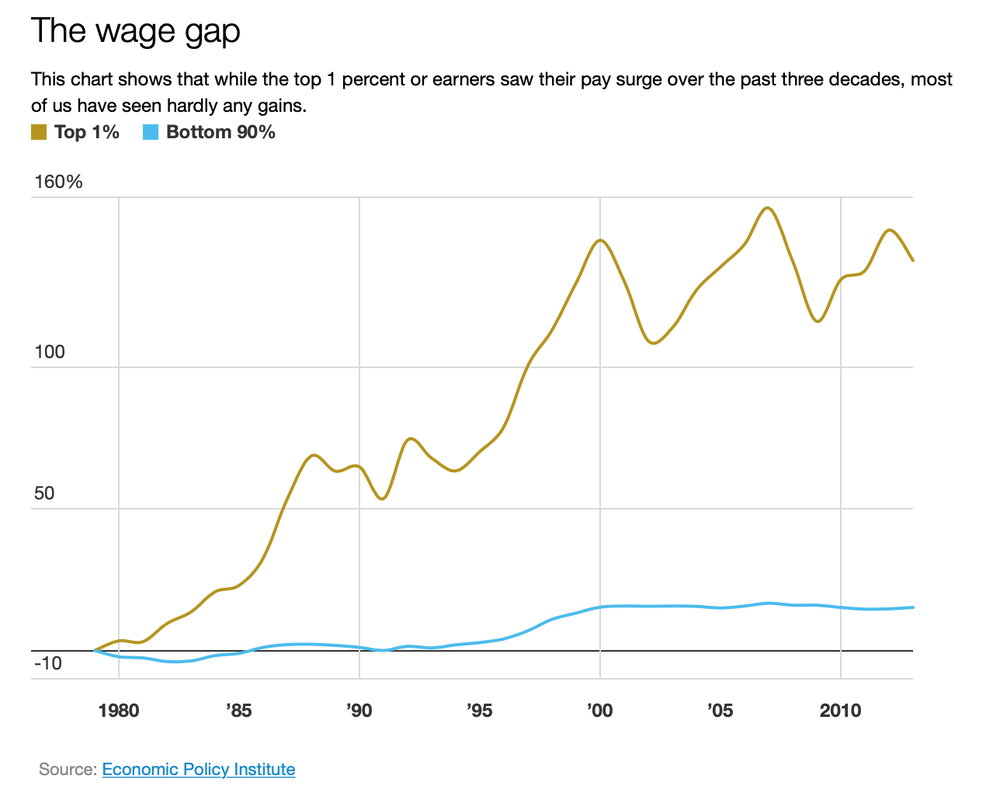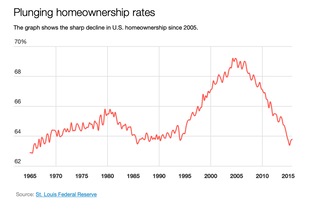Haunted by the American Dream  The American Dream has always been perceived by Americans as the trend toward upward social mobility for the entrepreneur, the determined, and the hard working. It’s the ability to go from rags to riches—or at least to a prosperous middle class. It is home ownership. It is stable employment--the ability to retire debt-free, and enjoy one’s golden years without fear. Of course, this fantasy has never applied equally to race, class, or gender. Many view the American Dream as the possibility of one’s children doing better, financially, than their parents. However, according to Brookings, “While 90% of the children born in 1940 ended up in higher ranks of the income distribution than their parents, only 40% of those born in 1980 have done so.” For all but the highest paid workers, wages have been in decline for the last 30 years. In 1950 CEOs were paid an average of twenty times the pay of typical workers. That multiple rose to 42-to-1 in 1980, and to 120-to-1 in 2000. The rich grew richer while the poor became poorer. Homeownership rates have recently hit a fifty-year low, below sixty-four percent, in 2015. Many ambitious books have been written about this complex decline in hope for upward social mobility among the poor, so I won’t cover that in depth here. There are, of course, many factors contributing to this trend (some I've already touched on): inflation, wealth inequality, racism, among others.
In 1977 when Jay Anson wrote his pseudo-true haunted house story The Amityville Horror, the American Dream was still achievable for a white middle-class family. This story, written more like true crime than a typical novel, follows the Lutz family as they choose a new home in Amityville, Long Island. With an $80,000 price tag—far below the going rate for this posh neighborhood due to the house having been the site of a mass murder—it is still somewhat above George and Kathy Lutz’s means, but they can’t pass up the opportunity. They decide to overlook the home’s past. After all, they aren’t superstitious people. Like many who attempt to live beyond their means, the Lutz family is just a single disaster away from losing everything. They are a single-income household, attempting to live the 1950s idyllic lifestyle with Kathy at home, filling her days with house-making chores and caring for the children, while George goes off to manage his small company. Throughout the novel, George Lutz frets over how he’s going to pay the bills and he’s shuffling money around from his small business accounts to his private accounts to cover checks he’s already written--even when he knows his business is about to be audited. Everything goes askew when the house turns out to be haunted. The story is full of details of their swift decline in fortune. Doors are ripped off hinges, windows are broken. George watches his wife levitate and listens to his pre-school-aged step-daughter describe conversations with a demon pig as if it were her best friend. Sludgy green goo emanates from a door lock and oozes down walls and staircases. Flies congregate midwinter. A strange hidden room—painted red and reeking of blood—is found in the basement. Kathy Lutz feels the hands of an invisible stranger. Strange smells permeate the air. Even the priest who tried to help them is plagued by stigmata and bedridden by stomach flu three times in three weeks. Ultimately, the Lutzs are driven from the home, leaving all of their possessions behind, and move far away, to California. The real Lutzs, who dreamed up this over-the-top confabulation, were also reportedly in some financial troubles, though that had to have eased significantly after royalties from this book poured in. But I have to wonder, were the Lutzs haunted by ancient demons or by the specter of intractable debt destroying everything they ever thought they wanted? References and Further Reading: Brookings Institute "Is the American Dream Really Dead?" Economic SYNOPSES 2015 I Number 14 "Lagging Long-Term Wage Growth" Economic Policy Institute "CEO Compensation has Grown 940% Since 1978" Wikipedia "Wage Ratio" The Conversation "Is the American Dream Dead?" Investopedia "What Does the American Dream Mean To Different Generations?"
3 Comments
Michelle Skeen
3/27/2022 08:30:44 pm
Hi Jen-
Reply
4/3/2022 06:33:51 pm
You bring up a great question, Jen. Maybe the Lutzes did hold a brainstorming session about how to get themselves out of debt. But you're right about many Americans being one disaster away from losing their home. If spirits wanted to drive out new owners, all they would need to do is make it a Money Pit--the Money Pit from Hell! ;-)
Reply
4/4/2022 07:32:30 am
I deliberately didn't look into into the story further to find out if it had been debunked, but clearly, in reading everyone's blogs, it turned out to be a hoax.
Reply
Leave a Reply. |
Jennifer Foehner WellsI'm an author of the space-opera variety. Archives
April 2022
Categories |



